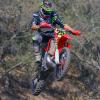
Photo: Does this look familiar? Then read on...
If you do a search for off-road, motocross tires or dual-purpose tires, the myriad of choices can be fairly mind-boggling…with so many options available, how do you select the right one?
We spent some time on two wheels and then behind the keyboard before bringing you some helpful tips on choosing the right tire for your off-road bike.
WHERE ARE YOU RIDING?
For example, answers may range from “rocky steep trails” to “sandy motocross tracks.” And as different as these two answers are, so are the tires required to do the job. There are so many different kinds of off road riding and racing we can’t cover them all and be accurate.
We talked to Michelin about this question and here's some of what they had to say:
“Our Starcross range is designed to provide optimum performance in the various soil conditions found on the typical motocross track, all while providing the durability riders expect from a Michelin product. For the Enduro/Off-Road applications our S 12XC and M 12XC products provide excellent performance with an increased focus on longevity, with over 25% extra tire life over our previous generation (S 12 and M 12).”
So we’ll look at these three types of off road tires:
1) MOTOCROSS TIRES
You’ll hear terms like “soft” and “hard” tires and we’ve always found this confusing.
The experts at Michelin describes it like this: “Other than different readings on a Shore Hardness rating scale, from a design and performance standpoint, the tread rubber compound is only one component that contributes to the overall performance of a tire in any given condition. The tread sculpture, knob height and spacing, along with casing construction and rigidity all affect a tire's specific performance capabilities.”
Simply for us who are not scientists, soft tires are for hard terrain: rocky, hard-pack tracks that can get blue grooved. These tracks require a soft compound tire so the knobs can wrap around and conform to the track surface, thereby achieving more rubber on the ground for better traction.
Quality tires choices in this category include the new Dunlop MX52, the Michelin MS3 and Bridgestone M204.
Hard/Intermediate tires are for softer terrain: muddy, sandy or lots of loam covered tracks that can get very deep with wide ruts. These tracks require a harder compound tire so the widely spaced knobs can dig in and create their own line, thereby achieving more rubber on the ground for better traction.
Quality tire choices in this category include the Dunlop MX32, Michelin MH3 and the new Pirelli Scorpion MXMH 554.
2) ENDURO and HARE SCRAMBLES TIRES
The same terms as noted above are used for these types of tires but there’s even a wider range of choices and sizes, as enduro bikes can use either an 18”or 19”rear tire. Some enduro pilots like to use a motocross tire but with the advances in tire compounds and tread patterns, you’d be better off looking at what’s made specifically for this type of riding if you’re looking for optimal performance…and who isn’t?
Dunlop Tire states "Tires for enduro and hare scrambles are similar since both are primarily run in softer, wetter, muddier terrain with slippery rocks and areas with exposed tree roots. Since some areas of these courses can be hard and slippery, the tires must account for this as well. The tread compound used in these tires must provide an optimum balance between wet and muddy terrain traction and long-wearing durability. Casing constructions must flex readily for riding over slippery rocks and tree roots, yet provide good puncture resistance. The tread pattern should clean well, even under the worst conditions, yet offer predictable handling in dry terrain.”
Keeping this in mind, the Dunlop D606, Pirelli Scorpion Pro (highly rated by riders and racers we spoke with) and Metzeler MCE 6 Days Extreme are all good choices.
3) DUAL PURPOSE TIRES
Dual purpose is a tricky area to address as the bikes vary in size and weight as well as terrain ridden. For example this category can range from small on/off bikes like the Honda XL250 all the way up to ADV bikes like the KTM 1190 Adventure, so no broad choices are evident. Here’s what we’ve found after talking to riders and the manufacturers such as Michelin:
Michelin has seen a “noticeable increase in sales” of their 50/50 use tires such as the T63 and AC 10. The Anakee III, which is an 80% on-road tire, has been well received as a popular choice for adventure riders who venture off road occasionally. To capitalize on this growing segment, Michelin plans to expand the Anakee range for BMW GS riders who are looking for a high performance off-road oriented tire(s) next year.
How much you ride on vs. off-road? This is the key in determining your tire choice.
Are you a trail rider who only sees pavement on the way to the trails? You’ll need taller, more aggressive tread pattern with wider spacing.
Are you a street rider who occasionally wants to cruise down a fire road? You’ll need low profile, closely spaced tread pattern.
Dual purpose tires are required to be DOT compliant and that mandates the tires meet some guidelines that many off-road and racing tires do not such as width, load capacity, speed ratings and minimum air pressures.
Another factor to keep in mind is that unlike some other off-road tires, matching dual sport tires up in a set is important to avoid handling issues on pavement and uneven wear front to back.
For example, a 90% street and 10% trail rider may pick a tire like the Michelin Anakee 3 (pictured below), if the ratio is more like 50% street and 50% trail, a good pick is the Dunlop D908RR and if you ride mostly dirt, the Pirelli XCMH should provide good hookup when in the loose stuff.

Photo: Michelin Anakee 3
In closing, selecting the right tire for your off-road motorcycle is critical to both performance and safety, so take your time and read as much as you can before you make your selection - and the forums here at ThumperTalk.com provide some rich analysis of the options available.
Keep the rubber side down!







Recommended Comments
Join the conversation
You can post now and register later. If you have an account, sign in now to post with your account.
Note: Your post will require moderator approval before it will be visible.